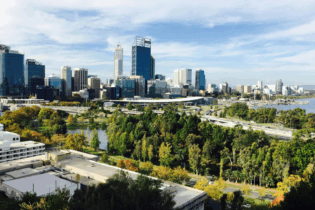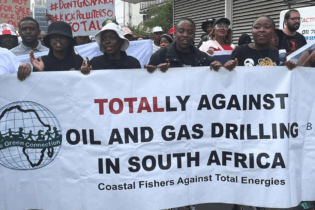South Africa is facing a significant challenge in its effort to upgrade its power grid, a crucial step for transitioning from coal to renewable energy. The country’s plan to expand the grid, now the primary obstacle to replacing coal with renewables, has encountered a major hurdle: securing the $21 billion (399 billion South African Rand (ZAR) needed for this project from investors, particularly for the state-owned utility company, Eskom, which is nearing insolvency.
Since the May elections brought a coalition government into power, there has been a policy shift favoring renewable energy, following years of delays and mixed signals about South Africa’s commitment to move away from coal, which still generates 80% of its electricity. Despite this shift, private companies like Mainstream Renewable, EDF Renewables, and Acciona SA, which are gearing up to transform the energy sector, face a new challenge: transmitting power from remote, sunny, and windy regions to the energy-demanding urban centers. In discussions with Reuters, six officials over the past month have mentioned they are exploring financing options for the 14,000 kilometers (8,700 miles) of power lines and pylons required but have yet to find a viable solution. Energy Minister Kgosientso Ramokgopa emphasized the importance of grid expansion for decarbonization efforts, stating, “Our quest to decarbonize… relies heavily on our ability to expand the grid.” However, raising the 390 billion rand ($21.30 billion) needed is beyond the state’s financial capacity. Donors have pledged $11.6 billion, mostly in loans, to fund climate-related projects, but they are hesitant to lend the necessary funds to Eskom without sovereign guarantees, which the South African government currently cannot provide due to Eskom’s high debt levels. The utility company owes over 400 billion rand, even after receiving significant government debt relief. Additionally, broke municipalities owe Eskom 78 billion rand, which Ramokgopa describes as an “existential threat.” The international community views South Africa’s transition from coal as a crucial test case for supporting developing countries in adopting green energy. However, years of blackouts caused by aging power stations have severely impacted Africa’s most industrialized economy. Eskom only managed to end these blackouts earlier this year by fully utilizing its coal-fired power plants, likely increasing emissions in the process. Last year, a bidding process aimed at bringing in independent power producers to generate electricity for Eskom failed due to insufficient grid capacity. The main issue lies in the current grid’s design, which is centered around the northeastern coal belt, while the best renewable energy resources, such as sunlight and wind, are found in other regions like the semi-desert Northern Cape and the coastal Eastern Cape. According to Crispian Oliver, head of the Presidential Climate Commission, “You really need to reconfigure the entire grid… (but) they are chugging along building at less than 10% the pace that’s needed.” Eskom’s plan involves constructing 1,400 kilometers of transmission lines annually for at least 10 years. However, last year, only 74 kilometers (45 miles) were completed.Given the current financial constraints, Treasury cannot provide sufficient guarantees to support the necessary investments. The alternative, as suggested by Oliver, is to involve the private sector in taking on significant portions of the risk, potentially through mezzanine financing.
Options being considered include escrow accounts, where a neutral third party holds the funds and releases them once both parties have met their obligations, and offtake agreements with private companies that would fund the construction in exchange for future earnings. These mechanisms could potentially unlock funding from sources like the United States, which currently does not fund transmission projects involving public institutions. Eskom’s CEO, Dan Marokane, highlighted the need for regulatory reforms to attract private investment in transmission infrastructure, particularly through tariff adjustments that would provide investors with clarity on their expected returns. He expressed hope that these changes would be implemented by the end of the year. Meanwhile, the Treasury has agreed in principle to finance some grid expansion projects on a case-by-case basis and is working to involve private companies, although these efforts may take up to 18 months. However, as Dicks from President Ramaphosa’s office stressed, “We need to build right now.” Officials have agreed to adopt Engineering, Procurement, and Construction (EPC) financing and Independent Power Transmission (IPT) funding methods, with the latter potentially opening the door to Chinese involvement, given the energy agreements signed between South Africa and China last year. However, attempts to reach a spokesperson for The State Grid Corporation of China were unsuccessful. Currently, the challenge remains daunting, but efforts are ongoing to overcome the financial and logistical obstacles to South Africa’s energy transition. Credit: Tim Cocks







